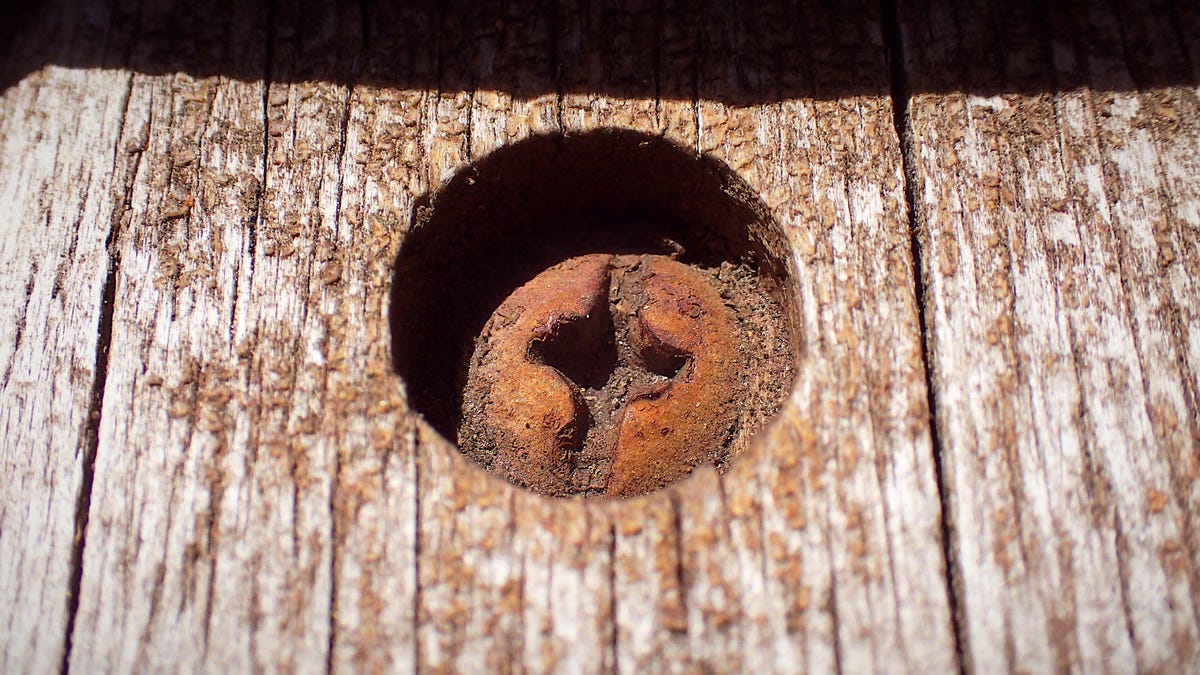Five Ways to Remove a Rusty Screw

Not only are rusty screws difficult to remove, they often have damaged heads that can come off completely, leading to even more difficult problems. Here are five things you can try to remove a rusty, stripped screw without ruining the surface you’re working on.
First, patience over the muscles
Removing a rusty screw requires some patience. In the store, we call this kind of thing precise persuasion, because even if you might need a hammer and other heavy artillery, you need to carefully apply force to get the screw out without damaging the object it’s on. stuck. You don’t need to be an expert to turn a stuck, rusty, or stripped screw, but you do need to be patient.
For this project, you will need some of the following, depending on which method you are using:
- Hammer
- Screwdriver
- Rust Penetrant
- Pliers or vise
- Extractor set
- wrench
- Boer
- Heavy Duty Gloves
- heat gun
- Hacksaw or rotary tool with a metal grinding head.
Use lubrication and percussion maintenance
If you have a rusty screw that won’t turn easily before you take out the impact tool and apply brute force, try using some lube and a bit of what I like to call “impact maintenance”. Tap the head of the screw with a hammer a few times to loosen the rust a little. Then apply an all-purpose lubricant to this area and touch it a few more times to create space for the penetrant to work. Leave it on for 15-30 minutes, then try using a screwdriver or a drill with a bit. If the screw head is torn off or too damaged to fit a bit, you’ll need to add a few more tricks to your arsenal.
Use pliers for better leverage
If the screw is protruding from the surface, you can use a combination of penetrant and pliers or a vise. While vices certainly offer more benefits as they lock into place, channel lock pliers offer just enough force to be a feasible solution if you don’t have a vice. Use your tool to slowly turn the screw counterclockwise. If it still sticks, you can add lube and hammer method.
Use an extractor kit
If the screw is broken or the head of the screw is too damaged for a screwdriver, an extractor kit is probably the best option. This kit includes a screw head smoothing drill and a twist drill that can hook onto the screw head by first turning against the direction of the thread and plunging into the surface before turning counterclockwise to remove the stripped screw. Be sure to wear gloves for this part because there may be nicks from the screw or metal chips caused by drilling the head of the screw.
Put some heat on it
If you’re working with a screw in metal, or if there are stuck washers, you can also try using some heat to get the screw to turn. Metal expands when heated, so heat can help remove rust from the outside of a screw and allow it to spin. Sometimes you can even try it with a hair dryer. You should also give a few good hammer blows to the head of the screw after heating to help break the bond between rust and metal.
Make a new slot
If the head of your rusty screw is stripped, you can sometimes make it spin by cutting a slot in the head of the screw. Using a hacksaw or a rotary tool, cut a slot in the head of the screw large enough to fit a flathead screwdriver. To turn a screw, you can use a wrench on a screwdriver handle or a flat head drill.